
Now we come to the scenic images of the region of central New York that I visited – wow, about a month ago now. That’s disturbing. I had a couple of things planned for this trip, and most of them I got to, and some I didn’t. The image above is a small reminder of one that I didn’t, which was snorkeling in the lake. As I said in the podcast, I’d started snorkeling in Cayuga Lake in the summer months of my late adolescence, and only managed to indulge sporadically after that – a whole bunch while I lived in Florida, but otherwise I had gone years at a time between short sessions since I left New York in 1990, mostly since North Carolina waters are really poor choices for this. The image illustrates the difference to a small extent: clear, shallow, with a varied bottom, and plenty warm enough at this time of year, though it usually took until late May before it reached a comfortable temperature, often later than that. Unfortunately, the one time I had set aside during this trip as perfect for a dip, the wind had come up and the water turned choppy, poor conditions to attempt it.
However, this was relatively minor, and I accomplished a few other things. One of which occurred, I think, on the very morning that this photo was taken, and that was to hear the ‘Lake Guns’ or ‘Seneca Guns’ again (even though this was Cayuga and not Seneca Lake.) The full story is here, but in short, something about the lake produces distant, single booms, like artillery rounds a long ways off, and I would hear them occasionally when out walking at night, back when I lived there. On this morning, I heard two spaced about ten seconds apart – but I can’t be absolutely sure that I heard the brontides, as they’re called. Before, I’d always hear them late at night, maybe up to 1 or 2 AM, when virtually nothing existed that would make any sounds at all, but on this visit they occurred just after sunrise, leaving the possibility that I was hearing some kind of human or industrial activity. It’s unlikely, because no such sounds are heard throughout the day and anyway it’s far from being an industrial region or anything of the sort, plus they were exactly the same as I remembered: a single thump, from very far away, aimed southwest down across the lake. And they still don’t know what causes them.
Another goal that I achieved was a trip back to Watkins Glen, since I hadn’t been since 2006 and hadn’t done it justice then, due to poor light conditions. But let me explain. The Finger Lakes of central New York were all glacially cut, with the glaciers finally receding about 11,000 years ago, so they exist in gentle valleys which makes the area quite scenic. In places, the glaciers ripped through deep beds of shale, making areas of steep cliffs along the lakes, and these occasionally produce waterfalls. Watkins Glen State Park is one such area, on neighboring Seneca Lake, only the river that cuts through it has been etching a deep groove in the rock for thousands of years, and it created a lovely gorge that now sports bordering pathways. It’s not a strenuous hike at all, and provides great views of the cascades and waterfalls that are still shaping the gorge.
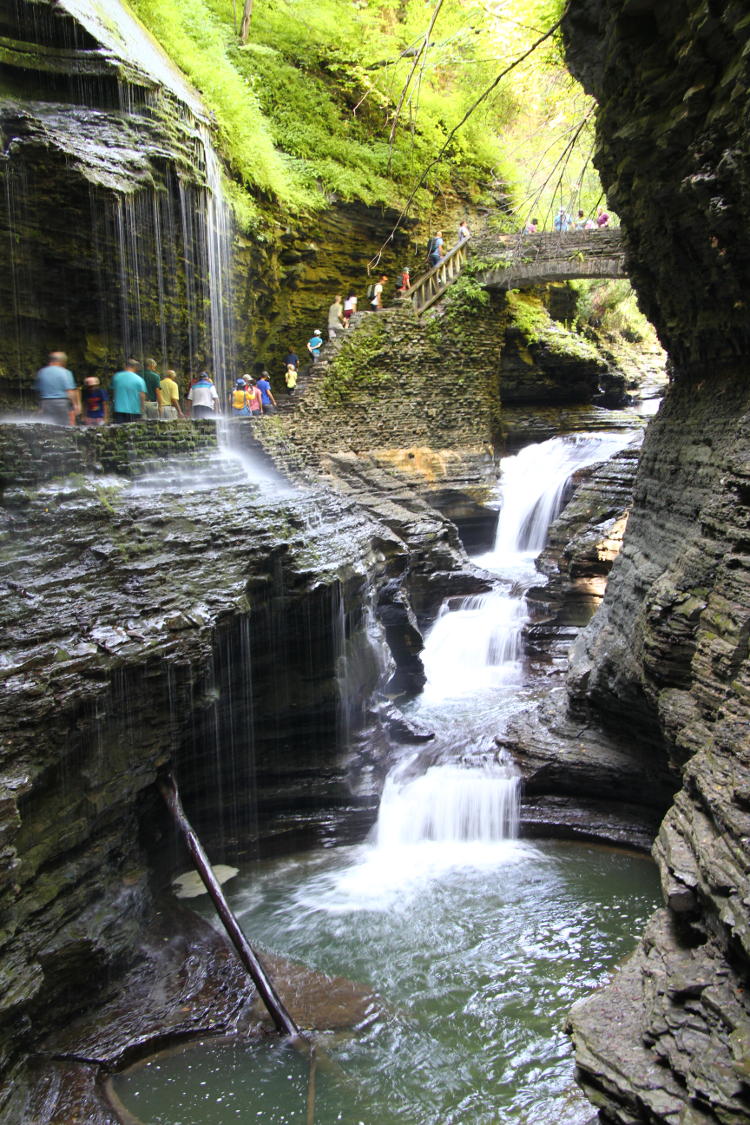
It was a fairly busy day when my host and I were there, which is a mixed blessing: people can provide scale to the images, but too many makes it appear crowded and ‘touristy.’ On my previous visit, people were scarce because the day was drizzly and chilly, but then again, the light was poor for the same reason, so ‘ideal’ conditions can be tricky to obtain.
By the way, the Glen is reshaping itself fairly rapidly. Shale is brittle, but most especially, water can get into cracks and freeze in the winter, expanding and breaking away chunks of rock routinely, which are swept downstream and serve to scour away other surfaces in passing. The relative age of certain pools and cascades can be guesstimated by how smooth the sides are; the smoother the edges, the longer the pool has been in place. Eventually, the lip under any given waterfall breaks away, causing the cascade to ‘step back’ and leaving the rounded edges of a former turbulent section still sitting downstream.
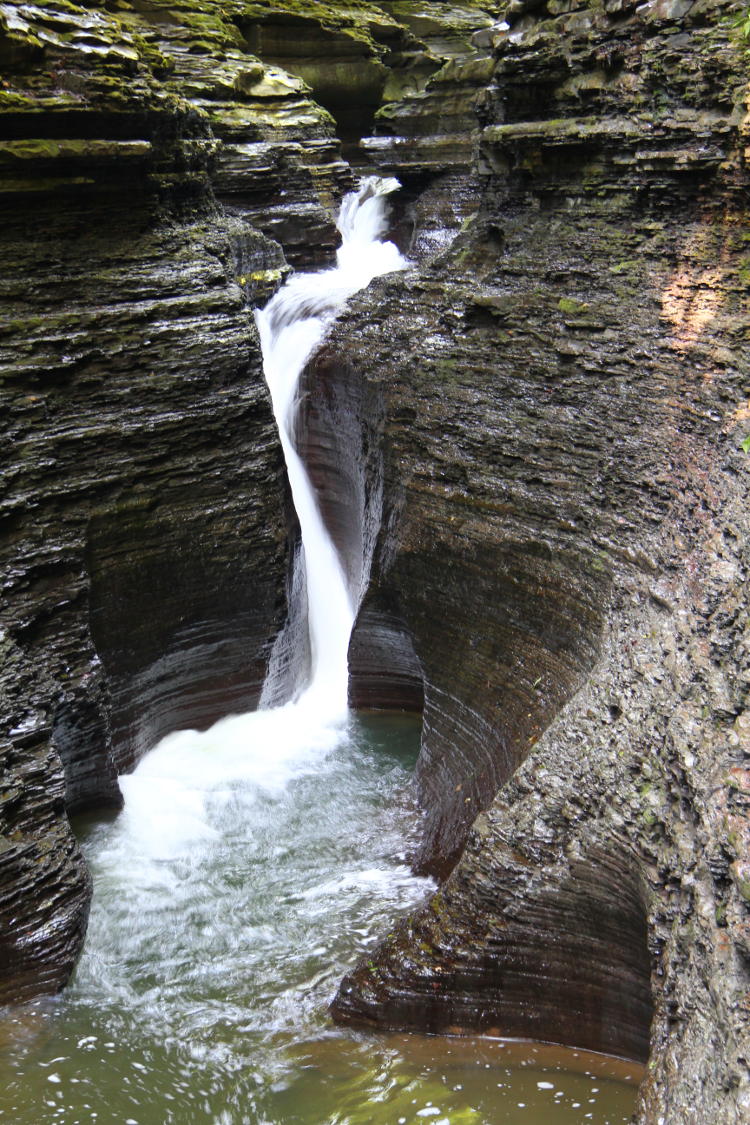
Near the entrance to the park is an educational display, and within the exhibits sits a comparison between a painting done in the 1800s and a recent photograph of the exact same spot; the changes in the river’s ‘steps’ are plainly visible, and highlight how quickly the landscape changes.
I had to note with some wryness how verdant the area is, because sheer rock walls were nonetheless covered in most areas with lush botanical life, making me wonder why it’s so hard to get plants and a decent lawn established in our yard, but then again, we don’t have a significant river cutting through it, so that’s probably a factor. But yeah, it was a decent time of the year to hit the park, anyway.
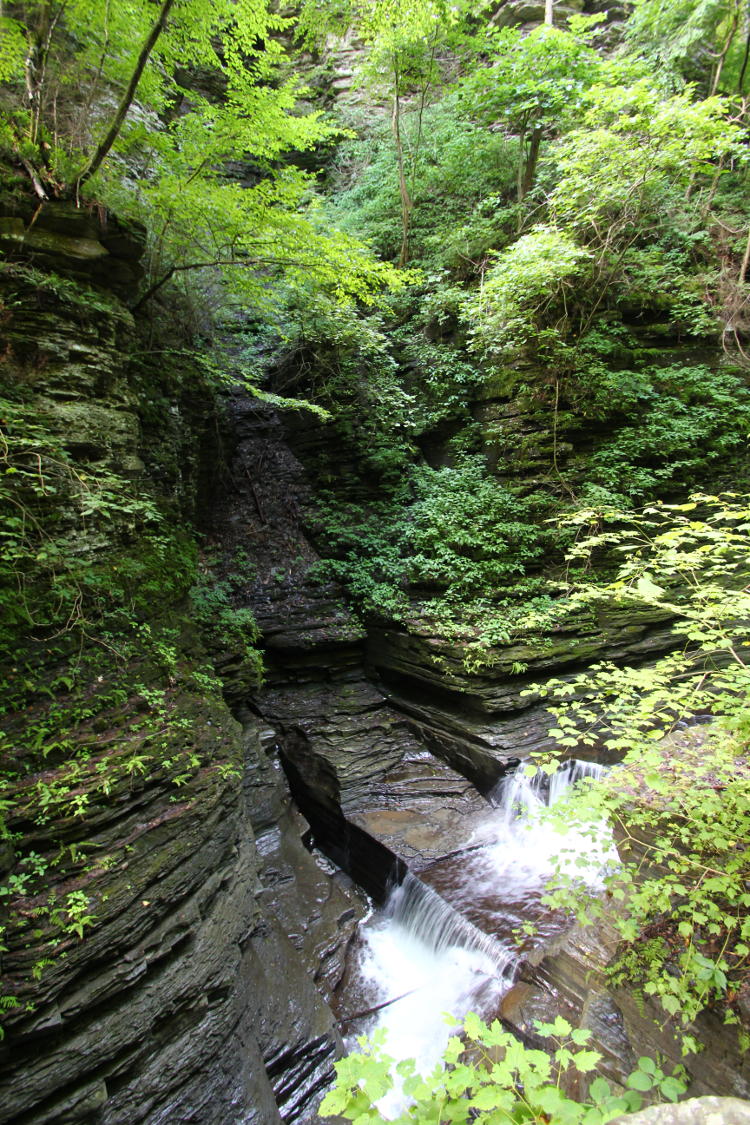
Places like this are done to death photographically, of course, and it’s hard to get something truly unique, especially when people that live nearby can visit any time they like, but I still made the occasional fartsy effort, like when I aimed straight down from one of the bridges at a fern that grew from the wall directly above a cascade.
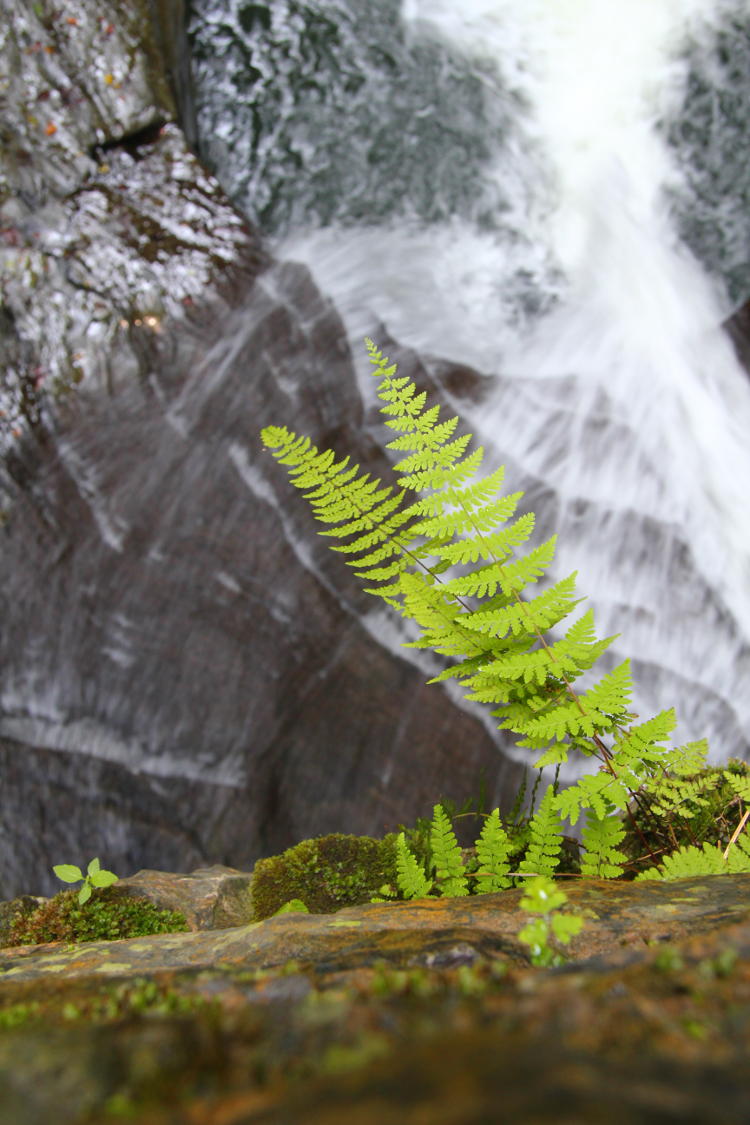
And no, the position of the leaves among the water highlights was not coincidental, thank you very much. Give me a little credit.
I’ve remarked before, more than once, that the region is pretty damn good for fossils, and the place where I’d stayed was a great example. Some of the retaining walls and such were built with rock quarried only a few hundred meters away, and among those were a truly stunning number of fossils. These are all very old, like 416 million years, which is before land plants even had leaves (respiration basically took place through pores on the stems,) so what you’re seeing here is very rudimentary sea life, more molluscs and corals and so on. Trilobites can be found, if you look carefully, but this trip involved no time for fossil-hunting, so we have grab shots of quarried rock alongside the lake.

I neglected to include anything for scale, but this is not a small rock – the face you’re looking at is at least 30cm high by over a meter wide, and the stone weighed well over a hundred kilos. Darwin’s first publications were in the middle 1800s, basically introducing the idea of evolved life forms to the world at large, so I have to wonder what people thought of such fossils before that time. Some, like the precursors of scallops, were reasonably recognizable, but others like trilobites and, I imagine, just about everything in these rocks, bore no resemblance to any species that could be found. But then again, worldwide communication was just starting at about the same period, so before that most people just weren’t very knowledgeable about any species other than the local fauna, and potentially didn’t wonder about it much – they simply weren’t aware that there were no living species, anywhere, that resembled these.
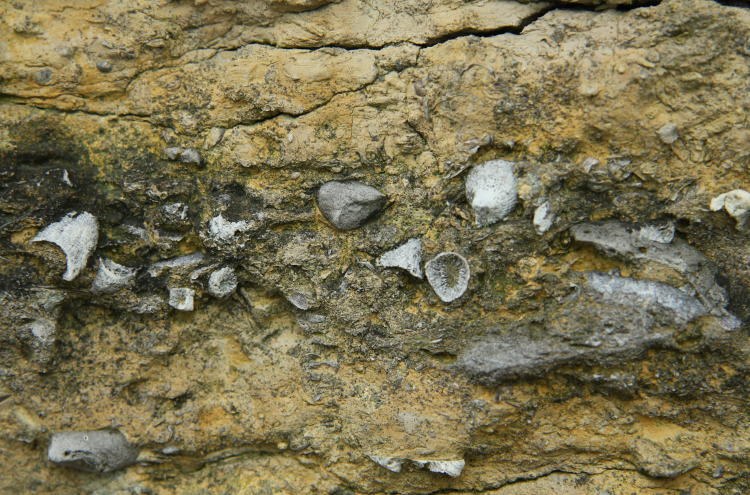
I admit that most fossils are fairly subtle and can be overlooked if you’re not paying a lot of attention, but these kinda jump right out at you. This also illustrates a typical trait, which is that fossils tend to be found densely only in narrow layers, and not throughout any given rock; evidence of the rare confluence of events that provide the conditions to even fossilize organisms in the first place. In most cases, just like now, dead species never got preserved, instead decaying away, but at times something happened to seal them in bacteria-free conditions that never eroded away until well after the mineral exchange took place.
And for scale, the little rounded ‘cup’ just right of center in the frame would comfortably seat your fingertip, being about 15mm across or so. But don’t ask me what it is, or looked like when alive.
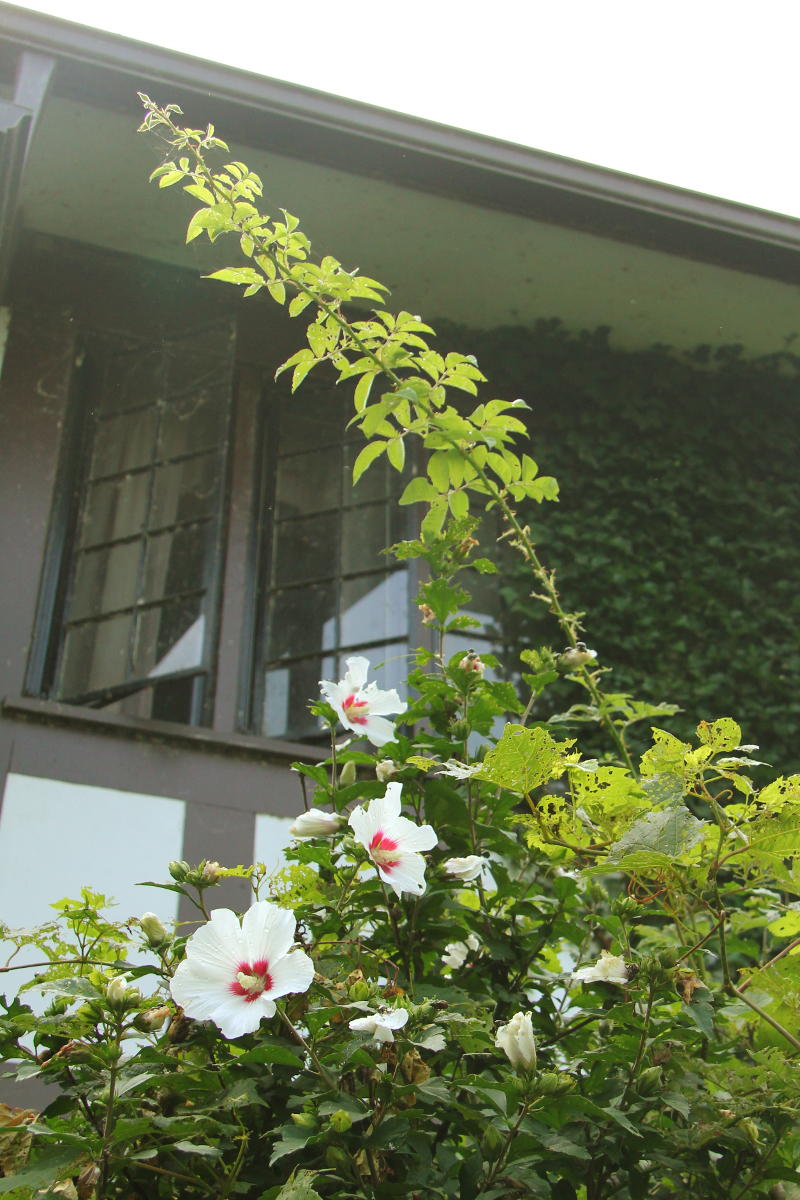
Just a brief break, being fartsy with the place I was staying at on the lake – that’s my room in the background. I didn’t ask for permission to use any images of the place, and it’s private property, so this is all I’m going to show (and all that I can legally – I’m very big on permissions and respecting rights.) When I say “Gatsby mansion,” I may be overstating the case a little, but it’s definitely estate-sized, and built around that period – gorgeous, and desperately in need of becoming a wedding reception hall or something similar. The shower for the master bedroom has ten shower heads in it – no, not like a gym, but like a car wash, sluice someone down in seconds. I think the living room alone has the same floor space as the entire house here. And as I said, right on the east side of Cayuga Lake.
Which means I was in a good location for sunsets, and I took full advantage of this, helped by the fact that central New York is pretty damn good about producing them.

Where I sit now in North Carolina, the skies have too much of a tendency to be perfectly clear when the sun lowers, even if the clouds might have been interesting all day, and clear skies are boring for sunsets. You need something to color the light, and to capture and reflect it, as seen above. Granted, this often occurs because it rains much more frequently in NY than NC, and in comparison, it tends to be gentle but lasting rains, rather than the sudden torrents that Carolina and Florida get. My old rule was that, if the meteorologists reported 60% chance of rain in NY, that meant it would rain 60% of the day. It rained at least twice while I was there for only four days, but not too long either time, so it was mostly clear weather, and of course a bit cooler than down here. And even the clear skies still produced a little bit of interest when the sun went down.
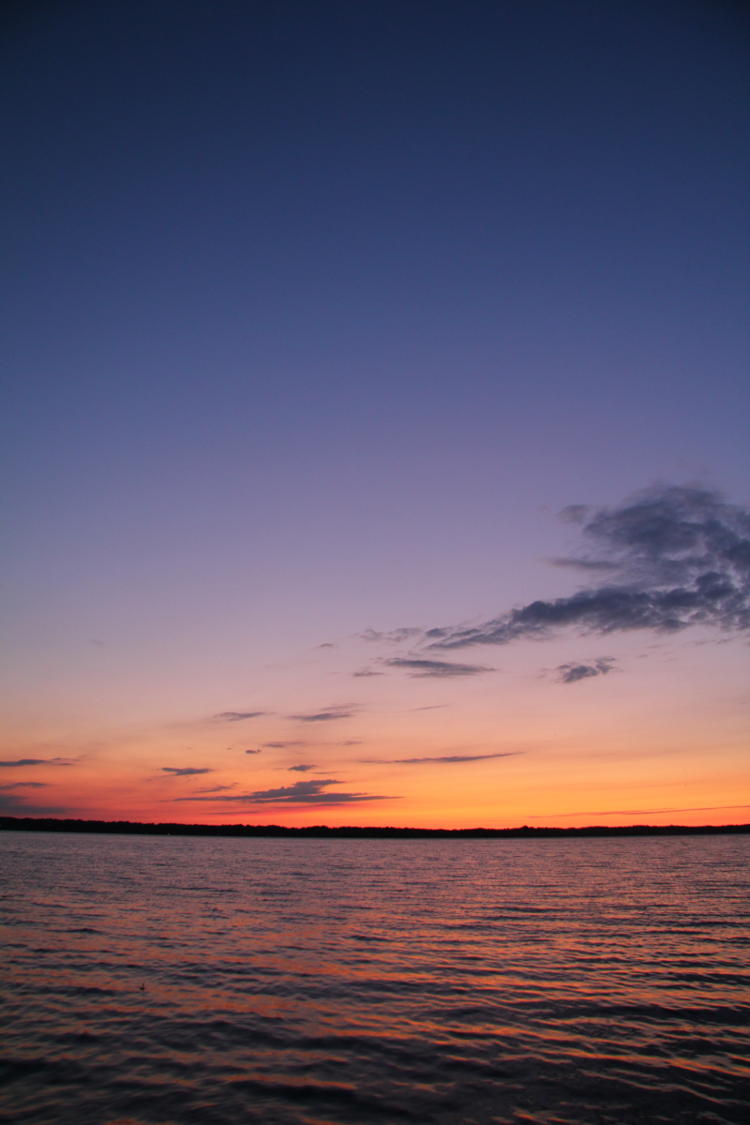
I include these two photos, taken a few minutes apart, to illustrate the difference in coloration that occurred. This happens pretty often at sunrise and sunset, but it’s so subtle to our eyes that we rarely notice a thing, so it’s not a bad idea to keep shooting the ‘same’ thing if you’re making the effort in the first place.

Have I made you want to visit yet? You should, at least in summer or fall, because it’s a wonderfully scenic area and pretty mellow, and most of it is fairly rural so the driving is actually smooth and easy. On the way to Watkins Glen, we were passing through Mennonite country – think Amish if that helps – which meant the occasional horse-and-buggy on the roads. And notably, there is not this horrific aversion to putting shoulders on the roads like there is in NC.
I’ll close with one last sunset pic, tightly cropped to make it fartsier. You recall me mentioning the uncooperative herons in the previous Finger Lakes post, the ones that cut across the very dock I was standing on while my back was turned? They flew around the point and landed on the shore nearby, just out of sight, so I stalked them. Before I could get close enough, they took off again – really, much spookier than around here – but I managed to lock focus on one as it wheeled past again, crossing the glitter trail of the sun; it was the only frame that had tight enough focus. I can live with it.




















































